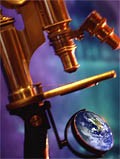 In the long-gone days of my Catalyst column on the original ChemWeb.com, I wrote about how R&D was becoming a distributed endeavour. It was going the way of large-scale data problems that are best solved using a distributed computing environment, or Grid. Now, roughly a decade later, it seems the management of globally dispersed R&D teams is coming of age.
In the long-gone days of my Catalyst column on the original ChemWeb.com, I wrote about how R&D was becoming a distributed endeavour. It was going the way of large-scale data problems that are best solved using a distributed computing environment, or Grid. Now, roughly a decade later, it seems the management of globally dispersed R&D teams is coming of age.
According to Hans Thamhain of Bentley University in Massachusetts, USA, it is common practice for companies to look for partners that can perform research and development better, cheaper, and faster. Managing such a geographically dispersed team is still a complicated process, especially in high-technology industries.
He points out that collaborative technology, such as “groupware” and other tools have made multinational joint efforts more feasible. However, as ever, true success rests on the team leaders effective must understand more than just the various work processes and the collaborative technology.
From medical research to computer systems, companies try to leverage their R&D budgets and accelerate their schedules by forming alliances, consortia and partnerships with other firms, universities and government agencies. These collaborations range from simple cooperative agreements to ‘open innovation’, a concept of scouting for new product and service ideas, anywhere in the world.
Thamhain has studied 27 high-tech companies operating across 14 countries and found that for distributed R&D to work, those team leaders must understand fully their own organisation and be able to deal with the complex social, cultural, and economic issues as well as the technical factors a multinational enterprise faces.
With today’s almost infinite connectivity possibilities across the globe, companies can access the best talent and most favourable cost and timing conditions anywhere, regardless of the location of their company headquarters. “Organising and managing such globally dispersed R&D teams towards desired results is an art and a science, and a great challenge,” says Thamhain. And, while machines are very good at carrying out processes, even in the age of silicon and electrons, people still remain the best at doing art and science.
![]() Hans J. Thamhain (2009). Managing globally dispersed R&D teams International Journal of Information Technology and Management, 8 (1) DOI: 10.1504/IJITM.2009.022273
Hans J. Thamhain (2009). Managing globally dispersed R&D teams International Journal of Information Technology and Management, 8 (1) DOI: 10.1504/IJITM.2009.022273